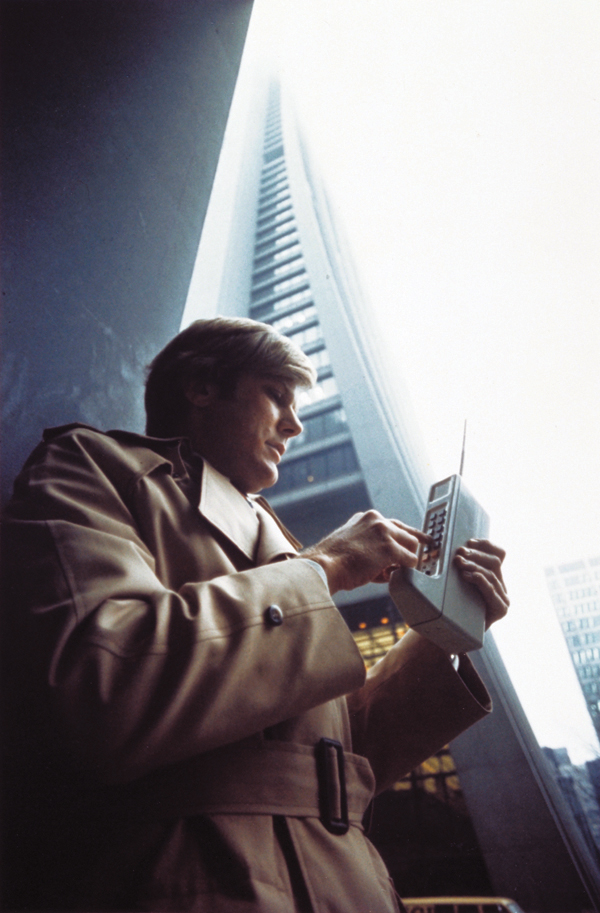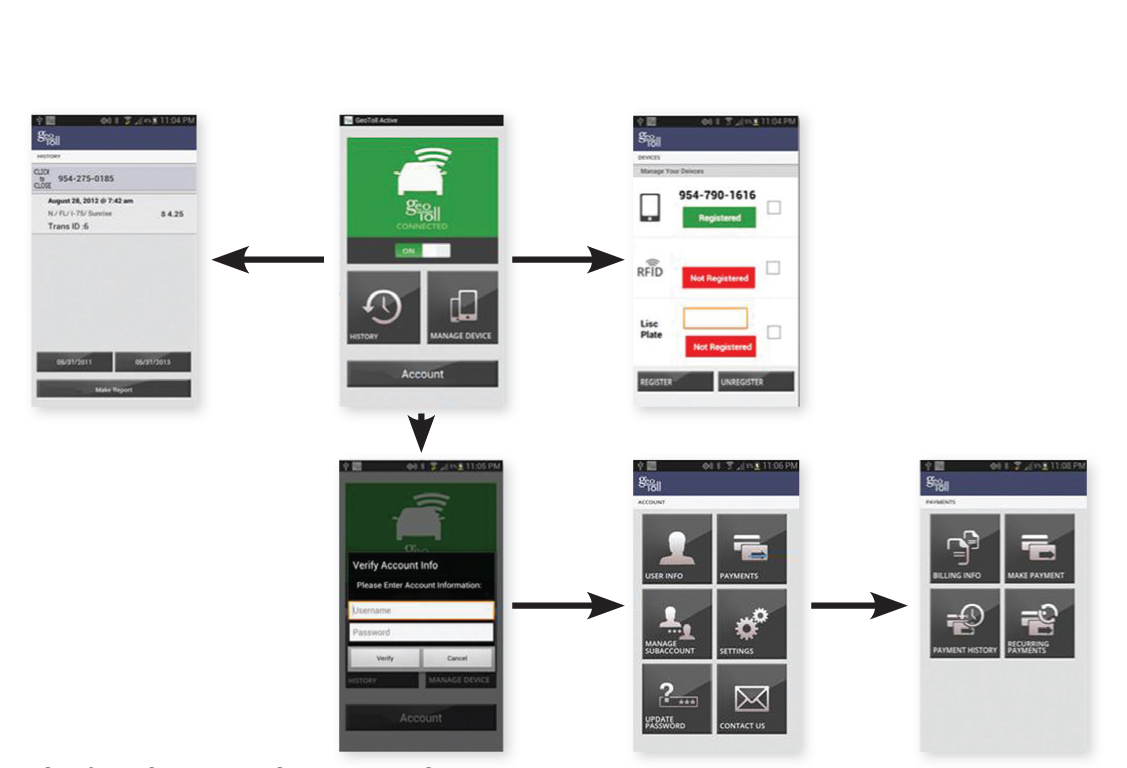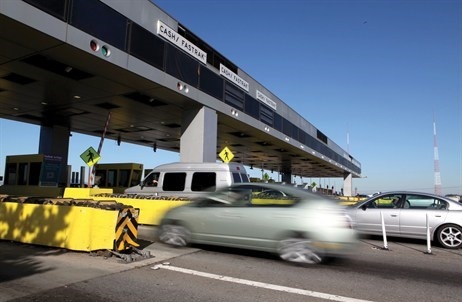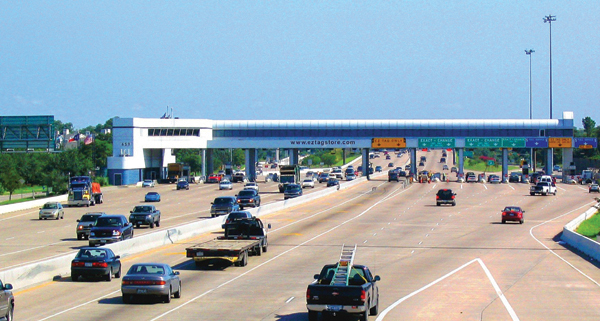For more than 20 years prior to joining the ITS industry, Mike Payne of Idris, part of Federal Signal Technologies, worked for Vodafone - the world's biggest mobile operator. Here, he considers how the road tolling sector can grow and learn from the cellular industry. The global cellphone has been one of the most successful collaborative technology projects in the last 30 years. Mobile phone technology developed throughout the 20th century with the first public service in the early 70s. This was followed by

Many of the ‘new’ issues faced by road tolling were addressed by the cellular communications industry decades ago
Picture: © Motorola Mobility, Inc., Legacy Archives Collection. Reproduced with permission.
For more than 20 years prior to joining the ITS industry, Mike Payne of
In 1982, a group was formed lobbying for a fully interoperable cellular system across Europe. This group called itself Groupe Special Mobile - or GSM - and it finally got
This year marks the 20th anniversary of the first GSM call, made by Telecom Finland's Radiolinja. A year later, the world's first roaming call was made between Radiolinja and
In the two decades since then GSM has become global, with more than 600 networks and 5 billion users. That could not have happened without solid standards, political support, a good business case and customer demand.
Similarities and differences
There are a lot of similarities between the tolling and cellular industries. Both are comprised of a large number of individual 'network operators' (or toll road authorities), both have customers who have a propensity to travel outside their 'home network' and both sell a variable price, transaction-based service.There has been much talk about tolling interoperability over the last few years, and the
The first thing you have to do when a cellular user is roaming is to identify and validate them. Validation - or authentication, as the cellular industry calls it - is essential to permit use of the service and minimise fraud. This is not necessary in a gated toll system, of course - if they haven't paid, you don't let 'em out - but once you have an open road you need authentication in order to be sure you'll get your money. The key question is: 'How confident are you that you can track down that customer to pay?' In GSM, this was achieved by the use of a very secure smartcard in the phone - the Subscriber Identity Module, or SIM - and end-to-end, real-time validation right back to the home network. The analogy with Open Road Tolling comes with the authenticity of a RFID tag or the ability to accurately identify the customer from his or her license plate.
What this leads me to ask is: should toll road authorities perform real-time validation of a tag back to the tag's 'home' authority, and is there a reliable database for real-time license plate look-up? Real-time validation means that only one network - the home network - needs to maintain an up-to-date register of its customers. A centralised license plate database overcomes the difficulties of dealing with sometimes-fragile DMV databases.
Of course, there is one fundamental difference between phone networks and open roads: you can deny service to a phone but you can't stop a car very easily - unless you do what Germany's
Reconciliation
The next thing you need for interoperability is to get the billing record back to the home network and perform reconciliation. In GSM, this was done by creating a standard for call records, called Transferred Account Procedure, or TAP.It was realised early on that the quicker you got these records back to the home network, the less fraud took place, so very soon operators began transferring files overnight or even more often.
Again, I recognise there is a difference here. You have some road users who do not have an account, so they may be considered to be roaming from an unknown network, which brings us back to the real-time license plate database for billing... and cellular networks don't have violators.
Architectures
I want now to look at architectures for interoperability.When the first few networks looked at interconnecting, they did so on a peer-topeer basis. It was a logical thing to do at that stage, and kept each relationship separate. Commercial agreements were established between each pair of parties and technical testing was carried out to common test specifications, for authentication and for call record transfer.
However, after a while, a host of new operators got up and running, many of them much smaller or with likely lower volumes of roaming traffic. Frankly, they were considered by the big boys to be too much trouble to waste time on and probably not cost-effective to manage.
The answer lay with the creation of a point-to-multipoint hub, and in 1996 Swisscom and Vodafone set up a joint venture called Comfone to do this. It was an immediate success, first providing a single authentication interface for larger networks to the multiplicity of smaller ones, and later a clearing house for call records. It enabled very widespread roaming capability, now serving hundreds of network operators. Its business model was to charge a very small transaction fee to the originating party. Comfone continues to thrive, is profitable and has continued to add new operators.
Furthermore, and as it should be, success drove competition, and other hub players entered the market, often providing similar services for other types of network such as WiFi and WiMax.
This, perhaps, is a good time to mention Termination Rates, the way cellular (and other telecom) companies share revenue to reflect the work done by each party. So far, the toll road authorities which have supported interoperability seem to have gone for a 'no share' model, passing over the full toll amount collected. But to allow each to cover its costs - that is, sharing the revenue collected to allow for both the road-related costs and the cost of billing/supporting the customer - might facilitate and incentivise in future, even if the end user has to pay a small premium when 'roaming'. This has worked well for the cellular industry and may well work for the toll road sector.
Technology differences
Another facet of interoperability is when the technology is different from network to network. This was overcome in the cellular world in one of two ways. Firstly, the phone manufacturers created phones which would operate in several frequency bands - 800, 900, 1,800 and 1,900MHz.Another solution was multi-protocol phones, for example GSM and CDMA.
Lastly, it was sometimes possible to take your SIM card and put it into a local phone. All of these tricks enabled roaming to become even more widespread. The analogies with roads are similar but with key differences driven by the cost structure prevalent in the toll road industry, so: make ALPR cameras and OCR software tolerant of more license plate types, or incorporate other technologies into the plate; use multi-protocol RFID readers - a cheaper and more logistically practical solution than swapping out the entire customer population with multi-protocol tags; and create a tag that can accept a portable smartcard.
Future directions
Now we come to future directions for our industry for which there may be lessons to learn from the cellular industry.We see more dynamic pricing coming into play, with demand-based pricing used to regulate traffic volumes and maintain a given quality of service. We see toll road authorities looking at extending the use of the tag into related services, such as car parks and gas stations. We see innovative pricing schemes. All of these sorts of strategies have long been used in the cellular world, where virtually all calls are dynamically priced, and premium rate calls and text messages are used to pay for nontelephone services.
Most cellular customers these days pay a monthly subscription which includes a bundle of services, simplifying billing and helping customers manage their spends.
Should we be looking at bundles for toll road journeys? Why not? Cellular billing systems have become very sophisticated to deal with these variations both quickly and cost-effectively; they also handle vast numbers of transactions. Should we be re-inventing the wheel? I've sought to look back at the hugely successful cellular industry and see what our toll road industry can perhaps learn from it, as we look towards both interoperability and expansion into new services. Not only are there great similarities that might allow us to see the best way forward, but they are two industries that have every opportunity to converge. Perhaps the old telecoms name for a call record - Toll Ticket - was a good omen.












